Nicknamed the “Live Music Capital of the World,” Austin balances an eclectic, free-spirited culture with world-class music, food, and attractions.
| Attraction | Description |
|---|---|
| The University of Texas at Austin | Offers tours, exhibits, performances, and observatory viewings on its flagship campus. |
| Lady Bird Lake | Provides outdoor activities like kayaking and biking, with scenic views and bat-watching. |
| Texas State Capitol | A historic landmark offering tours of its grand architecture and grounds. |
| Zilker Metropolitan Park | A 350-acre park with natural springs, botanical gardens, and outdoor activities. |
| Sixth Street Historic District | The main nightlife and entertainment district with live music, bars, and restaurants. |
| Bullock Texas State History Museum | Showcases Texas history through interactive exhibits and films. |
| Mount Bonnell | Offers panoramic views of Austin and the surrounding areas. |
| McKinney Falls State Park | Features hiking trails, historical ruins, and swimming spots. |
| The Paramount Theatre | A historic venue hosting concerts, comedy shows, and Broadway performances. |
| Hope Outdoor Gallery | An open-air gallery for street art and graffiti with rotating murals. |
| South Congress Avenue | A trendy district with boutiques, eateries, and street performers known as SoCo. |
Music lovers, outdoor enthusiasts, history buffs, and families alike will discover plenty of top-rated things to see and do in this energetic city. When planning your Austin itinerary, make sure to include these 12 can’t-miss attractions and experiences.
The University of Texas at Austin

Name and Location: The University of Texas at Austin is located in Austin, Texas. It is the flagship institution of the University of Texas System.
History and Significance: Founded in 1883, UT Austin is one of the largest universities in the United States. It is renowned for its programs in business, engineering, law, and other disciplines. The university has a rich history and its graduates have gone on to great success.
What to Expect: Visitors to UT Austin can expect a vibrant campus atmosphere with nearly 52,000 diverse students. Iconic buildings, museums, libraries, and landmarks make it a popular destination.
Visitor Information: Free campus walking tours are available. The UT Visitors Center has information, maps, and resources for visitors.
The University of Texas flagship campus offers plenty to see and do for visitors. Tour the Lyndon Baines Johnson Presidential Library to learn about the 36th U.S. President and view an exact replica of the Oval Office. Check out the inventions at the Texas Memorial Museum or gaze up at the stars at the McDonald Observatory. Wander the campus itself to snap photos by the iconic UT Tower and soak up Longhorns spirit. Catch a concert, gallery opening, or theater performance at one of the university’s many stunning performing arts venues.
Lady Bird Lake
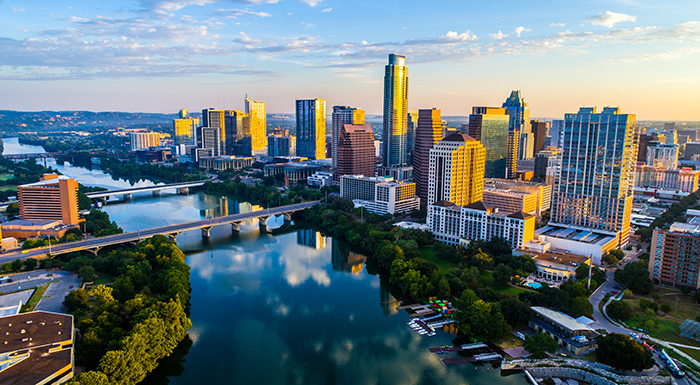
Name and Location: Lady Bird Lake is located along the Colorado River in downtown Austin, Texas. It was renamed in 2007 after former First Lady Lady Bird Johnson.
History and Significance: The lake was formed with the construction of Longhorn Dam in 1960. It offers recreational activities and scenic trails that showcase the Austin skyline.
What to Expect: Visitors can rent kayaks, canoes, paddle boards and enjoy hiking and biking trails. The lake has become an iconic part of the Austin landscape.
Visitor Information: Trail maps and information on boat rentals available at Austin Visitor Centers and online.
This scenic reservoir on the Colorado River flowing through downtown Austin offers outdoor fun for visitors. Rent a kayak, canoe, paddle board or electric boat to get out on the water. Bike, walk or run along the scenic 10-mile loop trail to enjoy views of the Austin skyline. Go fishing along the urban shorelines or relax in the park areas perfect for picnics. At night, stay for a free concert or watch the city’s famous bat colony take flight from under the Congress Avenue Bridge.
Texas State Capitol

Name and Location: The Texas State Capitol is located in downtown Austin. It houses the Texas Legislature and the office of the Governor.
History and Significance: Completed in 1888 in Renaissance Revival style, it is recognized as one of the nation’s most distinguished state capitols. Free tours are available.
What to Expect: Visitors can explore the Capitol and grounds, with access to the House and Senate galleries. The underground extension has a museum and gift shop.
Visitor Information: Open Monday-Friday 7am-10pm, and 9am-8pm on weekends. Guided tours are offered 7 days a week.
Standing grandly over the Austin skyline is the Texas State Capitol, a National Historic Landmark that dates back to 1888. Take a free tour of this imposing granite-and-red-granite building, which stands as one of the nation’s tallest state capitol buildings. Wander the 22-acre grounds filled with statues and monuments honoring Texas history and heroes. Make sure to walk inside the Capitol rotunda to take in the ornate architecture and intricate design work ceilings painted with symbolic motifs.
Zilker Metropolitan Park

Name and Location: Zilker Metropolitan Park is a large park located in downtown Austin near the banks of Lady Bird Lake.
History and Significance: The park was established in 1917 and named after Andrew Zilker who donated the land. It is Austin’s “Central Park” hosting events throughout the year.
What to Expect: Visitors enjoy picnics, Zilker Botanical Garden, canoe rentals, Zilker Hillside Theater concerts, hiking/biking trails, and more.
Visitor Information: The park is open daily 5am-10pm. Maps available online and the Barton Springs Visitor Center on premises.
This huge 350-acre park contains countless attractions drawing Austin visitors. See thousands of Mexican free-tailed bats emerge nightly from under the Ann W. Richards Congress Avenue Bridge from March to October. Hike or bike along the trails above Barton Creek. Picnic and swim at Barton Springs Pool, an open-air natural pool flowing from underground springs. Tour the Umlauf Sculpture Garden showcasing contemporary American sculptures with garden backdrops. Don’t miss the Zilker Botanical Garden highlighting 26 specialty gardens spread across 31 acres.
Sixth Street Historic District

Name and Location: The Sixth Street Historic District is located in downtown Austin, centered along Sixth Street.
History and Significance: Known as theLive Music Capital of the World, the district is renowned for music venues, bars, restaurants and nightlife. Sixth Street defined Austin culture since the 1870s.
What to Expect: Visitors can bar-hop, hear live acts of all genres, people watch, shop and explore this legendary street from Congress to Lamar Avenues.
Visitor Information: Always lively, the epicenter is open late. Go any night, but weekends are most active. Parking garages nearby.
When the sun goes down in Austin, Sixth Street comes alive as the main nightlife and entertainment district. The historic six-block area features iconic venues like Esther’s Follies comedy club, jazz event hub Elephant Room and famed blues bar Antone’s. Live music spills from almost every doorway with bands rocking outdoor stages, balconies and patios as well. People watching opportunities, street performers, unique shops, bars and restaurants make Sixth Street Austin’s top party destination.
Bullock Texas State History Museum
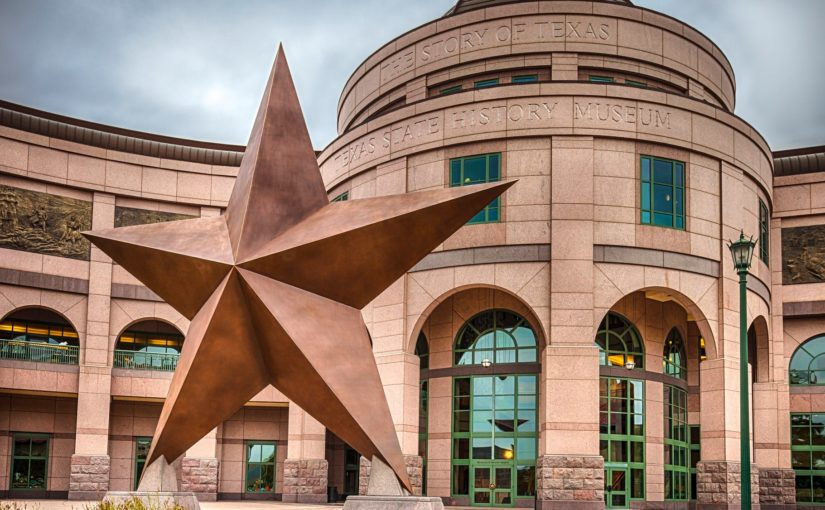
Name and Location: The Bullock Texas State History Museum is located near the Texas State Capitol grounds in downtown Austin.
History and Significance: Founded in 2001, the museum houses exhibitions related to Texas history and culture. Its IMAX theater shows documentaries on Texas themes.
What to Expect: Visitors can explore the entire scope of Texas history through interactive exhibits and displays. The museum store offers Texan souvenirs.
Visitor Information: Open daily 9am-5pm. Ticket pricing, IMAX showtimes and more details on the museum website.
This state-of-the-art museum uses high-tech interactive exhibits to trace Texas history from before European contact through present day. Visitors can watch reenactments of the Battle of the Alamo and shooting demonstrations by Texas Rangers. Exhibits showcase key events like Spanish colonization, the Texas Revolution, cattle drives after the Civil War and the state’s oil and aviation industries in the 20th century. Temporary exhibitions compliment the permanent Texas history exhibit collection. Giant screens regularly play Texas-themed films to further immerse visitors in Lone Star State lore.
Mount Bonnell

Name and Location: Mount Bonnell is a prominent point alongside the Lake Austin portion of the Colorado River, located in Austin’s Westenridge neighborhood.
History and Significance: Named after early Texas newspaper publisher George Bonnell, this scenic overlook has attracted sightseers since the 1850s and become one of Austin’s most popular landmarks.
What to Expect: Reached by a steep flight of stairs, Mount Bonnell rewards visitors with panoramic views of downtown Austin, the hills of West Austin and Lake Austin below.
Visitor Information: Mount Bonnell Park is open daily from sunrise to sunset. No fee or permit required.
For one of the best scenic overlooks around, make the short trek to the highest point in the city at Mount Bonnell. Only about 100 vertical feet tall, this city park perched along Lake Austin nonetheless offers panoramic views showcasing an impressive stretch of the Colorado River, downtown’s skyline and the surrounding hill country beyond. The short paved path to the overlook makes it wheelchair accessible. Postcard-perfect views from Mount Bonnell make this a romantic spot to watch the sunset with that special someone.
McKinney Falls State Park
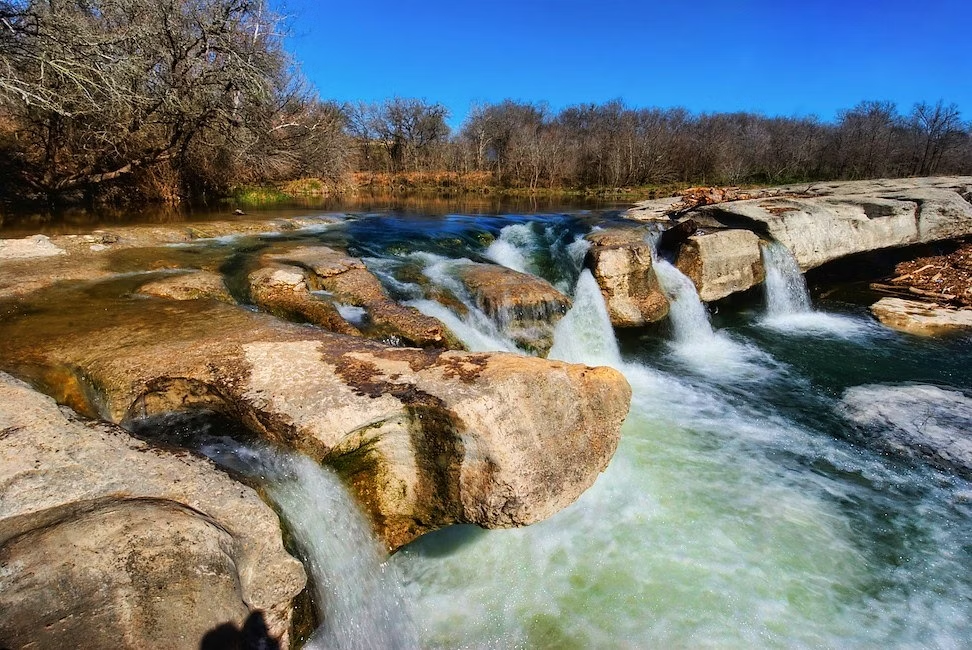
Name and Location: McKinney Falls State Park is located 12 miles southeast of downtown Austin, Texas on Onion Creek.
History and Significance: Named for Thomas McKinney, it is considered one of Texas’ oldest parks. The falls feature limestone rock formations and natural pools surrounded by wooded hiking trails.
What to Expect: Visitors enjoy hiking, mountain biking, camping, swimming in the creek, picnicking and connecting with nature just minutes from the city.
Visitor Information: Open daily. Day use fee per vehicle. Campsite reservations recommended.
Just 12 miles outside Austin city limits lies this 1,148-acre state park offering both history and great hiking. Tour the ruins of entrepreneur Thomas McKinney’s homestead, cotton gin, and horse-powered mill built in the mid-1800s. Bask in the sun at the scenic upper and lower falls where the cold spring-fed Onion Creek spills over limestone outcroppings into clear pools perfect for swimming. Over 8 miles of trails cater to hikers and mountain bikers wanting to explore fields, forests and limestone canyon carvings surrounding the waterfall areas.
The Paramount Theatre
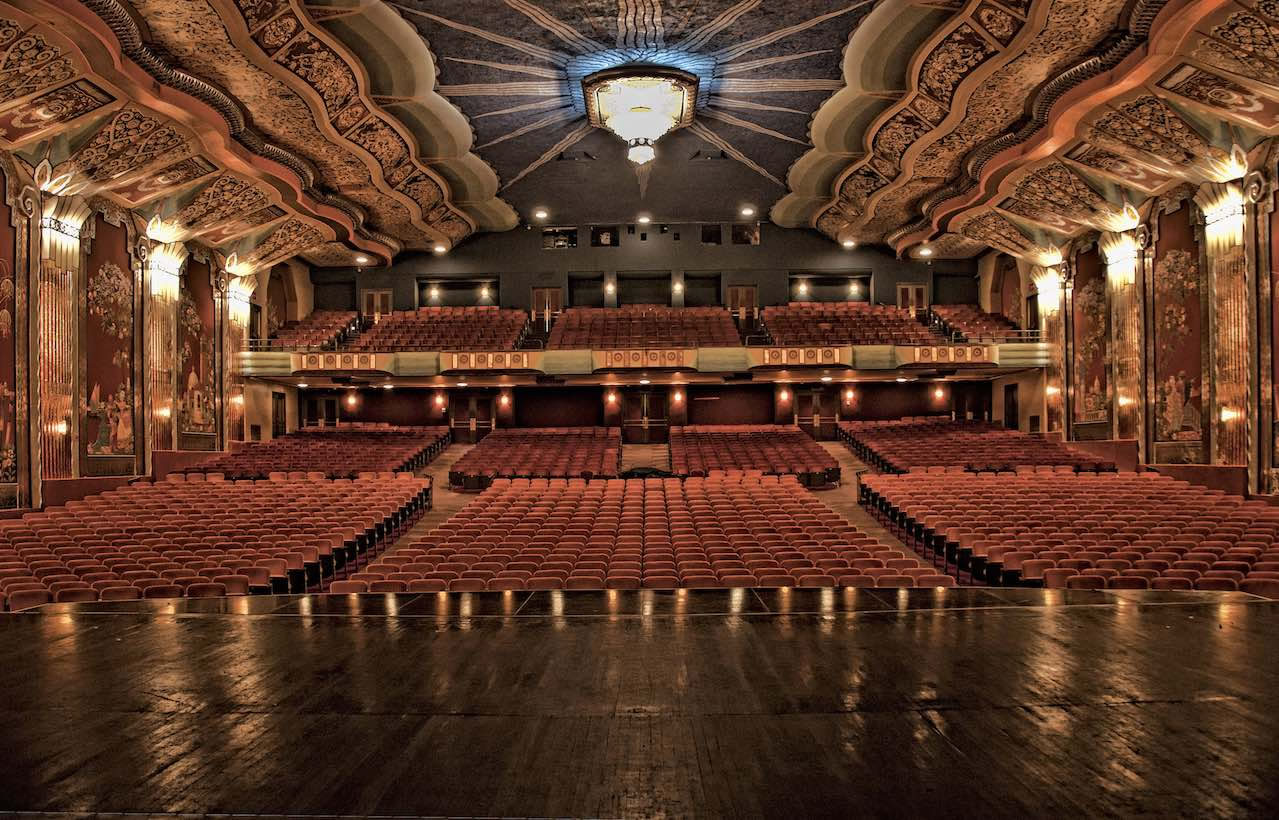
Name and Location: The Paramount Theatre is a live performance theater located on Congress Avenue in downtown Austin.
History and Significance: Built in 1915, The Paramount hosted vaudeville and films before becoming Austin’s leading theater venue, known for concerts, comedy acts and more.
What to Expect: Following a restoration, visitors can take in outstanding acts of all genres in an intimate, ornate setting downtown.
Visitor Information: Show schedules, tickets and more available on the theater website. Guided tours offered Monday & Wednesday.
This gorgeous performing arts theater listed on the National Register of Historic Places hosts concerts, comedy shows and more in a stunning 1930s movie palace setting. The Paramount’s towering two-story lobby wows visitors with French Baroque décor including gold leaf accents, marble statuary, velvet draperies and imitation sky ceiling with floating clouds and chubby cherubs. Many big-name touring Broadway shows command the theater’s 1,300-seat auditorium yearly. Take a guided backstage tour to admire this architectural beauty up close.
Hope Outdoor Gallery

Name and Location: Hope Outdoor Gallery is an outdoor art gallery located on 11th Street, just west of I-35 in Austin.
History and Significance: The graffiti park was founded in 2011 for street artists to freely express themselves. In a few years, it became a popular tourist attraction.
What to Expect: Visitors will discover an ever-changing art display as new pieces are constantly added. All ages can appreciate the urban artwork or add their own.
Visitor Information: Always open. Free to visit. Spray paint encouraged! Located under 12th St. bridge.
At this open-air gallery, street art rules with rotating murals constantly covering the multi-story exterior walls. Originally meant as a place for graffiti artists to freely express themselves without vandalizing, Hope Outdoor Gallery grew into a full public art space. Today you’ll spot everyone from urban mural masters to amateur taggers spraying paint here with artistic styles ranging from abstract to cartoon characters to words of hope and inspiration. Come with a spray can to leave your own temporary mural or just browse others’ bright, colorful (and ephemeral) creations.
South Congress Avenue
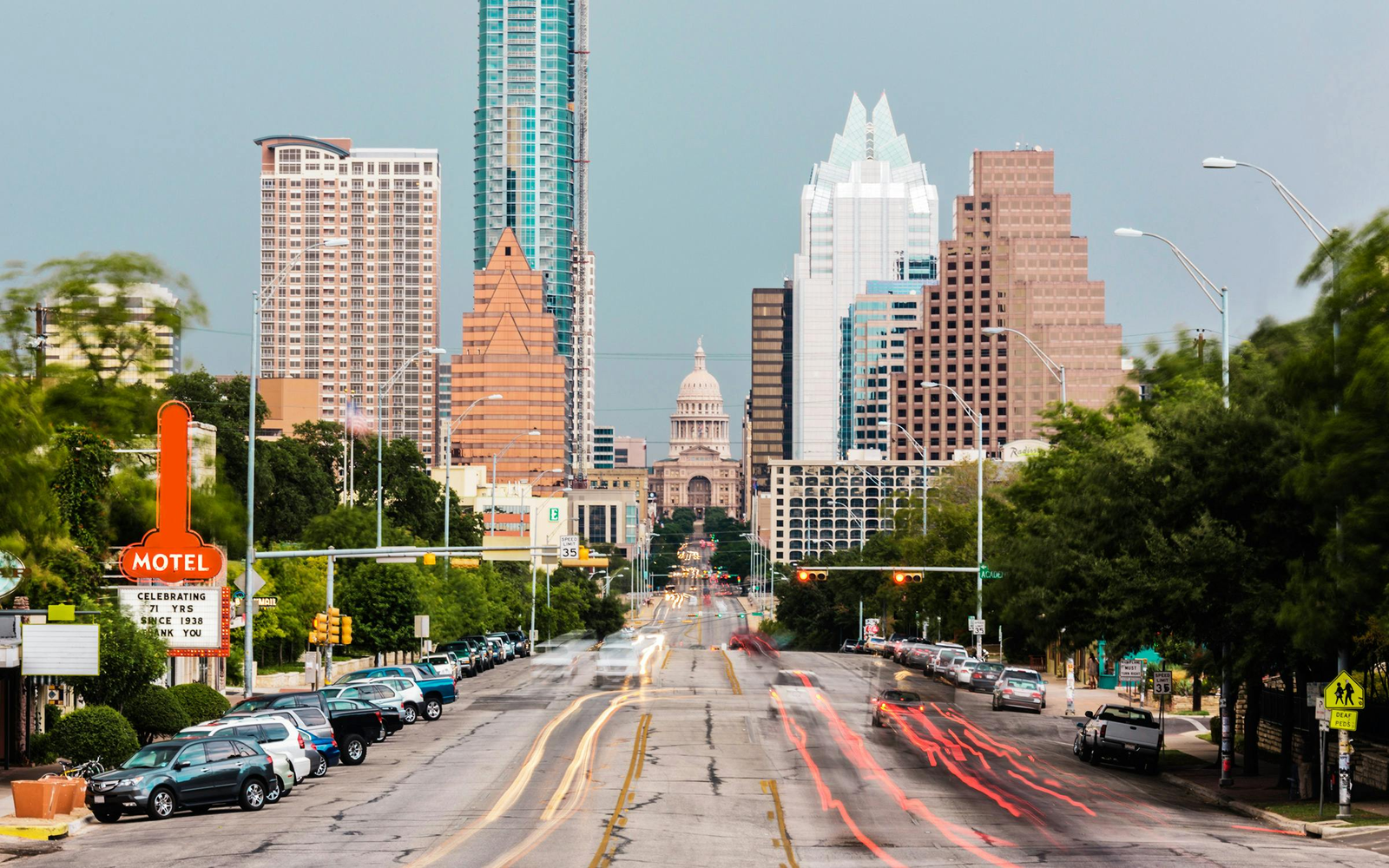
Name and Location: South Congress Avenue, known as SoCo, refers to the busy commercial strip lining South Congress Avenue in Austin.
History and Significance: Historically a prominent frontier trail, South Congress became a counter-culture hub by the 1960s that still retains an offbeat vibe. The avenue bridges old and new Austin.
What to Expect: Visitors can shop the eclectic boutiques, galleries and food trailers, stay at iconic hotels, take in the street performers while people watching on the patio bars and cafes.
Visitor Information: SoCo is busy year-round. Festivals held periodically. Parking varies but ample public transit nearby.
Known simply as SoCo by locals, the South Congress district has gone from a run-down strip to one of Austin’s trendiest shopping, dining and people-watching locales. The mile-long street contains a maze of hip boutiques, food trucks, and some of the city’s hottest eateries. Street performers, art installations and pop-up shops give SoCo an electric vibe. Join locals browsing for fashion-forward clothing, locally made art, and eclectic home goods before resting weary feet at an outdoor café to soak up free-spirited Austin atmosphere.
With an incredible music scene, museums for every interest, a wealth of outdoor spaces, and a funky local flair, visitors will discover endless things to enjoy across Austin. Next time you’re plotting your Texas travels, put this energetic capital high on your must-see list and experience these top attractions showcasing quintessential elements of Austin.




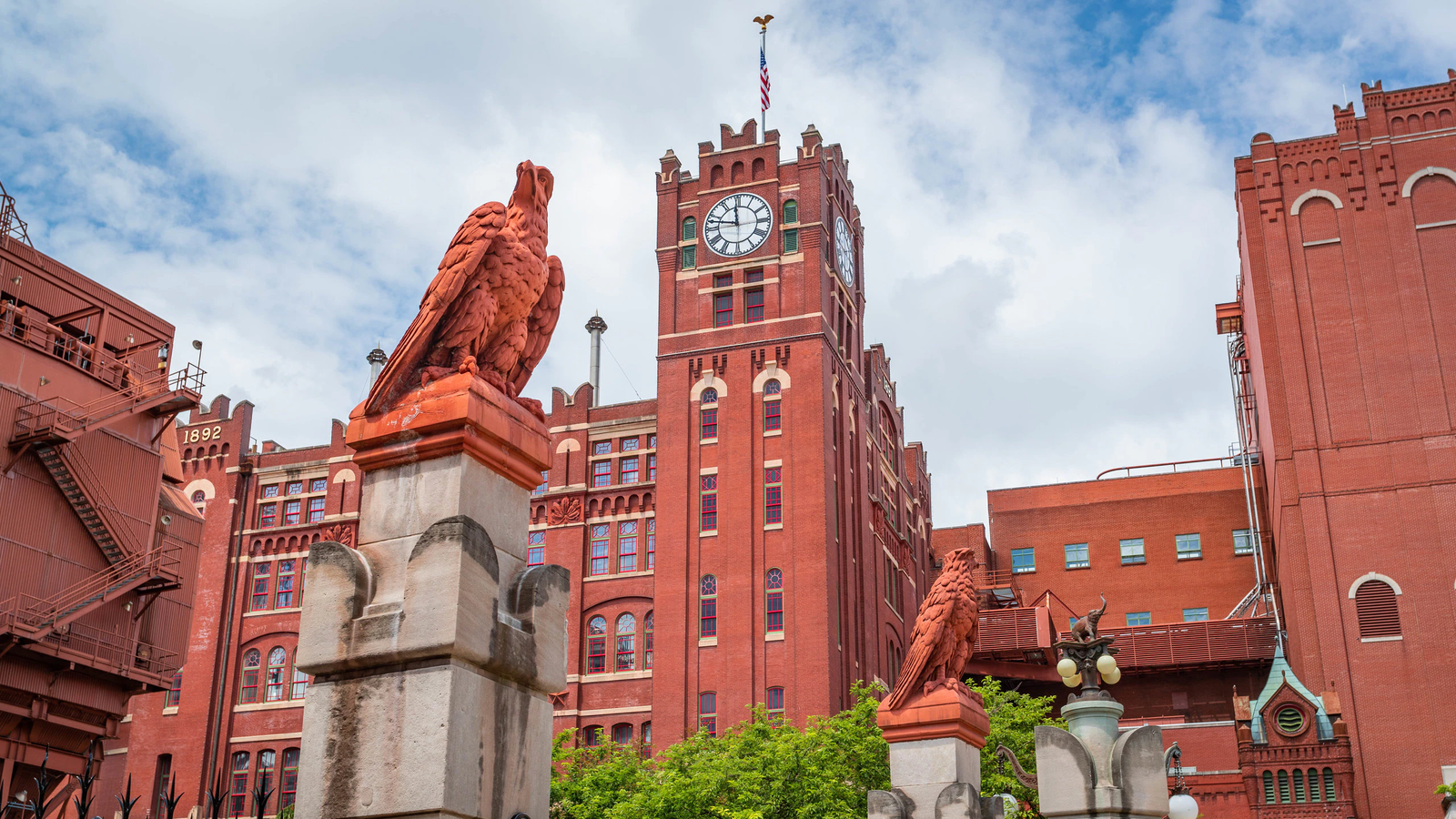
Join the Conversation